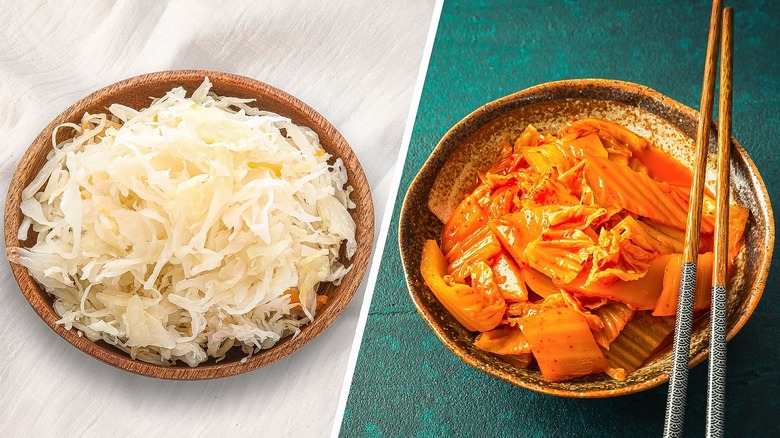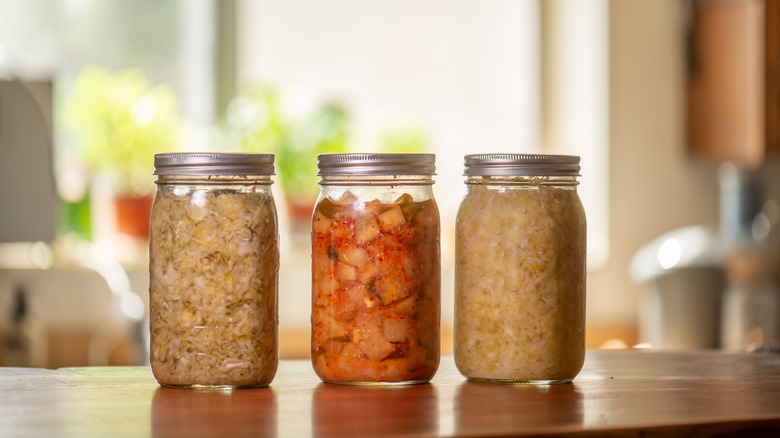The Major Flavor Differences Between Sauerkraut And Kimchi
Humans have been growing and eating cabbage for thousands of years, and we learned to ferment foods to better preserve them thousands of years before that. It's hardly a surprise that fermented cabbage pops up in recipes all over the world. Sauerkraut (which means "sour cabbage" in German) is a common one, made from raw, fermented cabbage garnished with salt and caraway seeds. Also common is kimchi, a South Korean dish frequently made from fermented cabbage and garnished with spices, but the two versions of fermented cabbage are not the same.
When it comes to flavor, the big difference is that sauerkraut is a simple dish with only a few ingredients beyond the cabbage, while kimchi includes a much larger variety of spices. Sauerkraut tastes tangy, salty, and acidic much like some pickled foods (although fermenting is different from pickling, using bacteria instead of vinegar). Kimchi's flavor will naturally vary depending on how it's made: your classic Napa cabbage kimchi has a generous amount of chili pepper flakes, garlic, ginger, and fish sauce which gives the flavor a sharp kick, and this is typically the dish most associated with the word "kimchi." That said, it's called baechu kimchi if you need to specify it.
Fermented cabbage around the world
Beyond the spices, the two dishes have quite a bit in common. Both dishes are considered to be very healthy, as the fermentation process adds probiotics such as lactic acid bacteria, which improve digestion — you have an entire microbiome of "good bacteria" in your stomach helping you digest foods, if you weren't aware. Fermentation also adds that sharp, acidic flavor, and letting store-bought kimchi sit out to let it ferment further is a great way to punch up its taste and improve your gut health. Both dishes are also packed with vitamin C, vitamin B6, potassium, iron, and plenty more. Cabbage is good for you.
It should be noted that not every dish called kimchi contains cabbage and can include lots of South Korean dishes made with fermented vegetables. There are over 100 kinds of kimchi across different regions of South Korea, and other versions include diced radish kimchi (called kkakdugi) which can be very spicy, or cucumber kimchi (called oi sobagi) made from fermented cucumbers stuffed with chili flakes and fish sauce. Sauerkraut, on the other hand, has less variety, and the biggest variation involves whether or not you include the caraway seasoning, which adds a nutty flavor.

